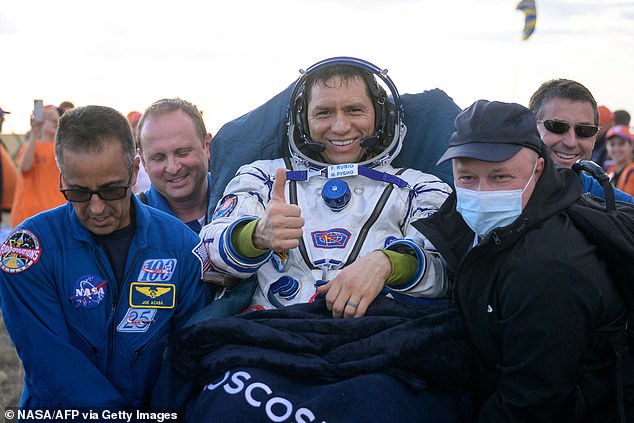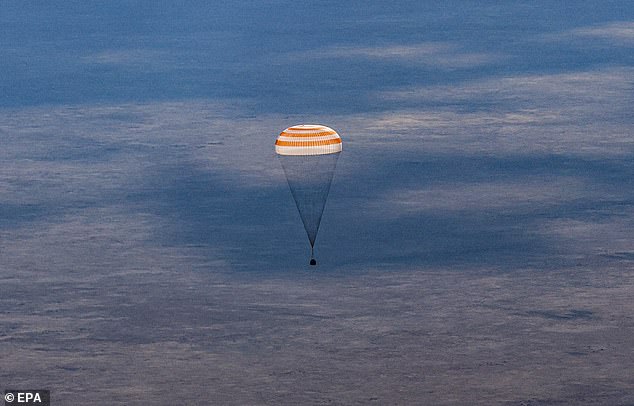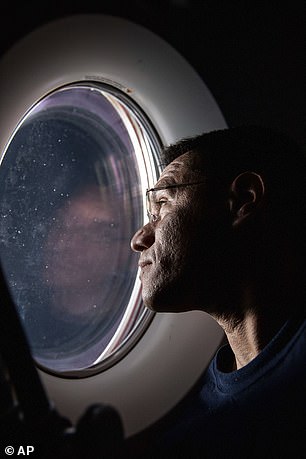US astronaut, Frank Rubio, breaks the record for the longest continuous space flight by an American, having spent 371 days in orbit
>
NASA astronaut Frank Rubio has returned safely to Earth after breaking the record for the longest continuous mission in space ever completed by an American.
After spending 371 days aboard the International Space Station (ISS) and orbiting the Earth 5,936 times, Rubio arrived safely in Kazakhstan, along with his two Russian crewmates Sergei Prokopyev and Dmitry Petelin.
Rubio also became the first American to spend an entire year in orbit, surpassing the previous American record set by Mark Vande Hei by two weeks.
NASA Administrator Bill Nelson said the record-breaking trip was not only a milestone but also an “important contribution to our understanding of long-duration space missions.”
“NASA is deeply grateful to Frank for his dedicated service to our nation and the invaluable scientific contributions he made to the International Space Station. He embodies the true pioneering spirit that will pave the way for future explorations of the moon, Mars and beyond,” he said.
NASA astronaut Frank Rubio has returned safely to Earth after breaking the record for the longest continuous mission in space ever completed by an American
However, breaking records was not the original intention of Rubio’s very first trip, as the mission was only supposed to last six months.
Rubio and his crewmates planned to return to Earth in March, but became stuck aboard the space station when their original spacecraft unexpectedly suffered a coolant leak.
It was later determined that the culprit was a micrometeorite, or piece of space debris, that struck their Soyuz MS-22 spacecraft three months into the mission, making it unsafe to return to Earth.
Space debris is becoming an increasingly dangerous problem as more satellites are launched, leaving behind clouds of cosmic debris that risk clogging near-Earth orbits.
Recent estimates suggest there could be over 23,000 pieces of debris over 10 cm, half a million pieces between 1 and 10 cm and more than 100 million pieces of debris larger than 1 mm.
In the time it took to organize a replacement crew and an alternate spacecraft, Rubio saw fifteen visiting spacecraft and traveled more than 253 million kilometers – the equivalent of 328 trips to the moon.
Although Rubio set the record for the longest American space flight, this was only the third longest space flight in human history, with two Russian cosmonauts who lived aboard the Mir space station in the 1990s claiming the top spots.
Valeri Polyakov maintains the all-time record for the longest space flight after spending 437 days aboard the space station.

After spending 371 days aboard the International Space Station (ISS) and orbiting Earth 5,936 times, Rubio arrived safely in Kazakhstan along with his two Russian crewmates Sergey Prokopyev and Dmitry Petelin.

Rubio also became the first American to spend an entire year in orbit, surpassing the previous American record set by Mark Vande Hei by two weeks.
As part of a series of tests to determine the effects of microgravity on the body, Polyakov lived aboard the Mir space station between January 8, 1994 and March 22, 1995.
During a press conference aboard the ISS, Rubio said that if he had been asked to spend a year in space before starting training, he most likely would have said “thanks but no thanks.”

Although Rubio set the record for the longest American space flight, this was only the third longest space flight in human history
As a father of four, he said he would have turned down the mission because of “family matters going on over the past year.”
After post-landing medical checks, the crew returns to Karaganda, a major city in Kazakhstan, before boarding a NASA plane back to Houston.
When asked what he’s looking forward to, Rubio says that “hugging my wife and kids will be the most important thing, and that’s probably what I’ll focus on for the first few days.”
He also said he was excited to be home enjoying “trees and silence” in his garden, after a year spent in the constant hum of the ISS’s life support machines.
Rubio was selected as an astronaut in 2017 after earning a doctorate in medicine in 2010 and serving 600 hours as a UH-60 Blackhawk helicopter pilot in Bosnia, Afghanistan and Iraq.
As a trained physician, Rubio is well aware of the long-term risks of spending more than a year in microgravity.
Spending long periods of time outside of Earth’s gravity weakens astronauts’ muscles and bones, making them unable to walk under their own power once they return to Earth.
The fluid in the inner ear that helps us maintain balance also adapts to low gravity, meaning a return to Earth may involve ‘being sick for a long time’.
Rubio said it would take between two and six months to regain his strength, while the first few hours would likely involve making “good friends with some medicine and some bags.”
Rubio and his crew will be replaced on board the ISS by NASA astronaut Loral O’Hara and Roscomos cosmonauts Oleg Kononenko and Nikolai Chub.
O’Hara will return to Earth in March 2024, while the two cosmonauts will each spend a year aboard the space station, returning in September 2024.
